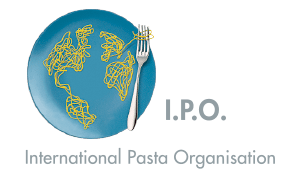Rumors and myths involving pasta continue to circulate in the popular press and in social media. In a provocative cover story, “Eat Butter,” published on its June 23 issue, Time magazine says scientists were wrong to label saturated fats the enemy and that carbs, sugar and processed foods are mainly to blame for obesity, diabetes and other weight-related diseases, according to a growing body of research. And in a recent book The Big Fat Surprise, the author Nina Teicholz espouses the theory that eating more meat and butter and saturated fat is more healthy.
IPO reacted by sending to the editor the letter copied below, and is now following up also with other media in the attempt to provide a useful and complete picture about this complex scientific debate about healthy diets.
Dear Editor,
We read with interest your June 23 cover story “Eat Butter.” The scientific debate over what is the right diet is complex and remains open. Since the consequences of such a debate are fundamental to people’s health, we believe it’s important to relay it in an accurate and balanced way, avoiding sensationalism. Unfortunately, your article does not always achieve this.
You cite growing evidence that the Mediterranean diet is a healthy way to eat. We believe that’s correct, since fifty years of scientific research have consistently shown that it can lower the incidence of major chronic diseases such as diabetes, heart disease, obesity and even some types of cancer. However, you fail to specify that the Mediterranean diet recommends having at least 50% of calories from carbohydrates, which are mostly demonized in the article.
The story also lumps carbohydrates together into one category, a common mistake. Scientific evidence shows that eating pasta, a cornerstone of the Mediterranean diet, is healthier than eating potatoes, rice, bread and other carbs.
A year ago, an international scientific consensus was reached on the importance of measuring the quality of carbohydrates with the glycemic index (GI).
A high GI means that foods are digested, absorbed or metabolized quickly, whereas in low GI foods the process is slower, with a positive effect in terms of not feeling hungry for longer and helping to control the blood sugar level and insulin response. The GI runs from 0 to 100 and foods with a higher number tend to spike the blood with sugar. This taxes the organs – in particular, the pancreas – and can lead to diabetes and obesity. For example, the increase of sugar levels in the blood one hour after eating spaghetti (average GI of 45) is remarkably lower than the increment recorded with baked potato (GI index of more than 90)
A low GI diet, which can be attained with pasta, is therefore beneficial for health: It reduces the risk of type 2 diabetes and coronary heart disease, and contributes to keep weight under control.
Decades of scientific research have shown that a healthy eating pattern is based on multiple combinations of many foods in the right portion and frequency. The Mediterranean Diet – which is based on cereals, fruits and veggies – is one of the most well-known and scientifically based models for living healthier lives for longer.
We hope that our considerations will help to give a useful and complete picture around such a complex topic.
Sincerely,
Claudio Zanao
President
To learn more
Here are some links to interesting blogs written by Dr. Sara Baer-Sinnott President of Oldways, Dr. David Kats of Yale University, and Dr. Walter Willet of the Harvard School of Public Health.
The Real (Fat) Truth — Not a Surprise!
June 3, 2014 | Oldways Table
The Greatest Dietary Guidance? If It Gets Cold, Reheat It!
Huffingtonpost.com, May 5, 2014, David L. Katz, Director, Yale University Prevention Research Center
FAT: Ending the War that Nobody Started
June 16, 2014, David L. Katz, Director, Yale University Prevention Research Center
Scientists Fix Errors in Controversial Paper About Saturated Fats
March 24, 2014 Kai Kupferschmidt, Science Magazine
Comments from Dr. Walter Willett, Chair of the nutrition department at the Harvard School of Public Health




